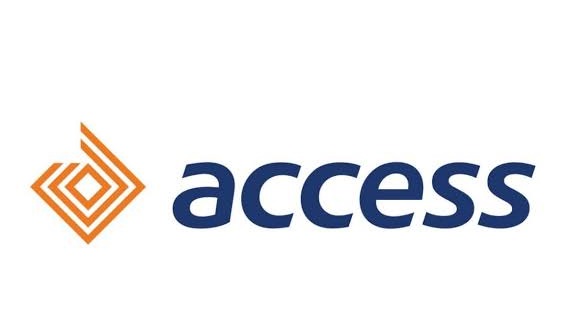- Search for topics or project materials by department. 2015/2016 Research Work 46 ARCHITECTURE 12 Accounting 158 Agriculture & Farming 21 Arts and Crafts 25 BIOCHEMISTRY 30 Bank & Finance 45 Biology 1 Business Administration 162 CHEMICAL ENGINEERING 18 Career People 18 Computer Science 0 Computer Science 244 Computer Science E-books 0 ECONOMICS 117 EDUCATION 78 ELECTRICAL ELECTRONICS 88 ENGLISH 14 ESTATE MANAGEMENT 16 Electrical Electronics 0 Food 19 Forum 0 General Topics 4 HOSPITALITY & TOURISM 123 Import & Export 10 Land Survey & Geoinformatics 68 Law 7 MARKETING 37 Marketing & Advertising 11 Mass communication 155 Masters and Doctorate 118 Mechanical Engineering books 0 Media & Publishing 6 Medical Science E-books 0 Micro Biology 4 Micro Biology 8 OTHERS 0 Oil & Gas 11 Online & Internet 36 POLITICAL SCIENCE 0 Program / Source Code 0 Programming E-books 0 Public Administration 25 Real Estate 20 Religious E-boooks 0 Retail 20 STATISTICS 17 Science Laboratory 0 Science laboratory 56 Sermons & Prophecies Ebook 0 Services 19 Small Scale Manufacturing 21 System Applications 0 Technology 30
PRODUCTION OF COPPER-CLAD PRINTED CIRCUIT BARE BOARD SUBSTRATE FROM AGRICULTURAL AND PLASTIC WASTE MATERIALS
PRODUCTION OF COPPERCLAD PRINTED CIRCUIT BARE BOARD SUBSTRATE FROM AGRICULTURAL AND PLASTIC WASTE MATERIALS
ABSTRACT
The use of printed circuit board is unavoidable within the electrical and electronic industries. Various types and models exist, all made from synthetic substrates. The environmental impact of discards of printed circuit boards as well as the need to go green globally poses challenges to the printed circuit board manufacturing industry. In the attendant search for wider utility value for agrowaste based particle boards, this work presents the research of utilizing agrowaste based particle boards as virgin substrates for the production of printed circuit board wafers. The agrowaste materials were pretreated, ground and pressed into boards using a Novalac resin Melamine formaldehyde. After cutting to sample sizes, the samples were cleaned and electroless deposition was carried out on the boards using nonprecious metal catalyst as against the conventional precious metal catalystPalladium. Material strength characterization of the boards was carried out to determine the durability of samples when in use. Scanning electron microscopy of the samples showed good deposition and acceptable roughened topography which compared well with that of a commercial grade sample. A simple conductivity test was done with an ammeter to prove the transfer of electrical current at the surface of the substrates. This phase of work concludes that there can be deposition on natural waste materials and that going green in the area of circuitry is achievable. Optimization of process conditions will create another niche for the use of conversion products from agro waste discards while giving the products a valueadded status.
CHAPTER ONE
INTRODUCTION
1.0 GENERAL INTRODUCTION
Printed circuit boards are boards used in the connection of lead lines of various electronic
parts/components. Such important circuitry parts like resistors, capacitors, transistors are
housed and connected using metalclad nonconducting substrates and the whole network
is known as a printed circuit board1. These boards are made in three basic structural
classes, i with a shield or earth plate; ii with a multilayer structure; and iii as a thin
film, single layer. They are pathways made of copper or some other conducting material
that is etched or laminated onto a rigid or flexible surface. The printed means that the
material is deposited onto the substrate and the discrete wires are not used.
The search for printed circuit boards dates back to the 19th century when telegraph,
telephone and radio inventions were being recognized as practical devices for everyday
use and they all required wiring connections2. For example, the increasingly complex
radio circuits needed an alternative wiring technology which ought to be simpler than the
existing tedious and error prone wiring technology. As a result, in 1903, Albert Hanson
3 filed a printed wire patent which was to solve the problem of multiwire connection
dilemma. His patent clearly described the concept of doublesided throughhole circuitry.
This first circuit pattern touched on so many concepts that are seen to be of modern
origin.
Printed circuit board is synonymous to printed wiring board which is undoubtedly the
most common type of printed circuit. It is a copperclad dielectric material with
conductors etched on the external or internal layers. It is subdivided into singlesided,
doublesided, and multilayer boards. ...Get Complete Material.
View Related Projects
A CRITICAL ANALYSIS OF THE FACTORS FOR THE LOW IMPACT OF FOREIGN AID ON THE SOCIOECONOMIC DEVELOPMENT OF NIGERIA, 1960 – 1985
ABSTRACTForeign aid inflows in Nigeria have grown significantly in the independence period. Many studies have tried to...
Continue readingSPATIAL SEGREGATION TO ENHANCE PASSENGERS’ COMFORT AND SECURITY
ABSTRACTTransportation is a requirement for every nation, regardless of its industrial capacity, population size, or t...
Continue readingEFFECT OF MICRO-ALLOYING ON THE STRUCTURE AND MECHANICAL PROPERTIES OF Al-4%Cu ALLOY
ABSTRACTThe effect of micro alloying on the structure and mechanical properties of aluminium4 copper alloy was studi...
Continue reading

